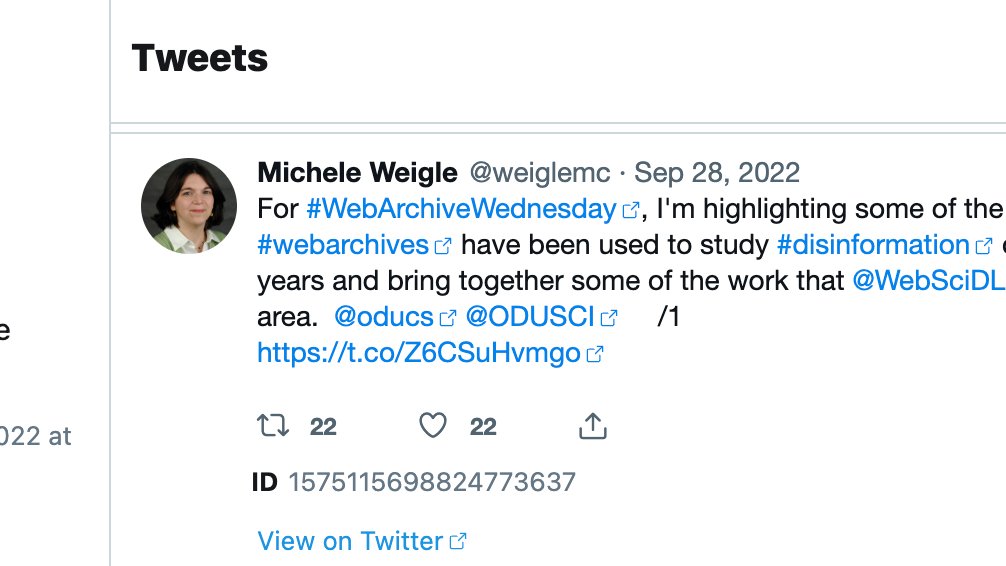For #WebArchiveWednesday, I'm highlighting some of the ways that #webarchives have been used to study #disinformation over the past few years and bring together some of the work that @WebSciDL has done in this area. @oducs @ODUSCI /1
ws-dl.blogspot.com/2022/09/2022-0…
ws-dl.blogspot.com/2022/09/2022-0…
Examples include how #webarchives have been used to:
* examine how webpages have been changed
* corroborate or refute posted screenshots
* study archived social media posts
* investigate metadata and past behavior of particular social media accounts
/2
* examine how webpages have been changed
* corroborate or refute posted screenshots
* study archived social media posts
* investigate metadata and past behavior of particular social media accounts
/2
This post is essentially a follow-up to @WebSciDL MS student @lesley_elis's recent post that looked at how journalists use web archives. ws-dl.blogspot.com/2022/08/2022-0…
Below are links to some of the @WebSciDL projects that I mention in my blog post. /3
Below are links to some of the @WebSciDL projects that I mention in my blog post. /3
Two of the projects were from this year's @oducsreu @NSF REU Site in Disinformation Detection and Analytics, work done by undergrads @calebkbradford and @haleybragg17. /4
ws-dl.blogspot.com/2022/08/2022-0…
ws-dl.blogspot.com/2022/08/2022-0…
The analysis of screenshots and mementos of blog.reidreport. com landed @phonedude_mln on TV a couple years ago. /5
https://twitter.com/phonedude_mln/status/990244746252570624
There are several references to the work of @WebSciDL PhD students @kritika_garg @HimarshaJ and alum @ibnesayeed (now Web and Data Scientist @internetarchive) analyzing the quality of Twitter mementos. /6
ws-dl.blogspot.com/2020/12/2020-1…
ws-dl.blogspot.com/2020/12/2020-1…
PhD student @HimarshaJ kicked off our study of how well Instagram is archived. @WebSciDL /7
ws-dl.blogspot.com/2020/11/2020-1…
ws-dl.blogspot.com/2020/11/2020-1…
PhD student @tarannum_zaki is currently investigating techniques to distinguish fake screenshots of social media posts from real ones. @WebSciDL /8
https://twitter.com/phonedude_mln/status/1485704384222830593
We are working with @WebSciDL alum and @DrexelCCI faculty @machawk1 on a @US_IMLS funded project to study how well online ads are archived. /9
ws-dl.blogspot.com/2022/08/2022-0…
ws-dl.blogspot.com/2022/08/2022-0…
Thanks to research from @amelia_acker and @katestarbird and collaborations and discussions with my @WebSciDL colleague @phonedude_mln for piquing my interest in this intersection of #webarchives and #disinformation! /end
• • •
Missing some Tweet in this thread? You can try to
force a refresh












